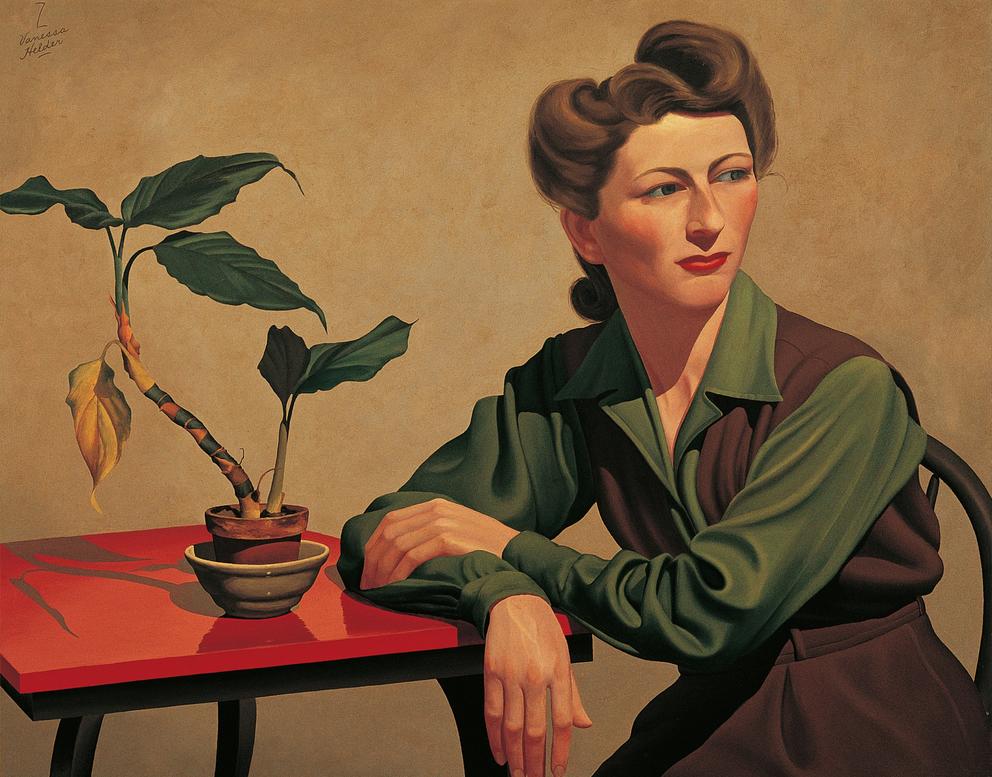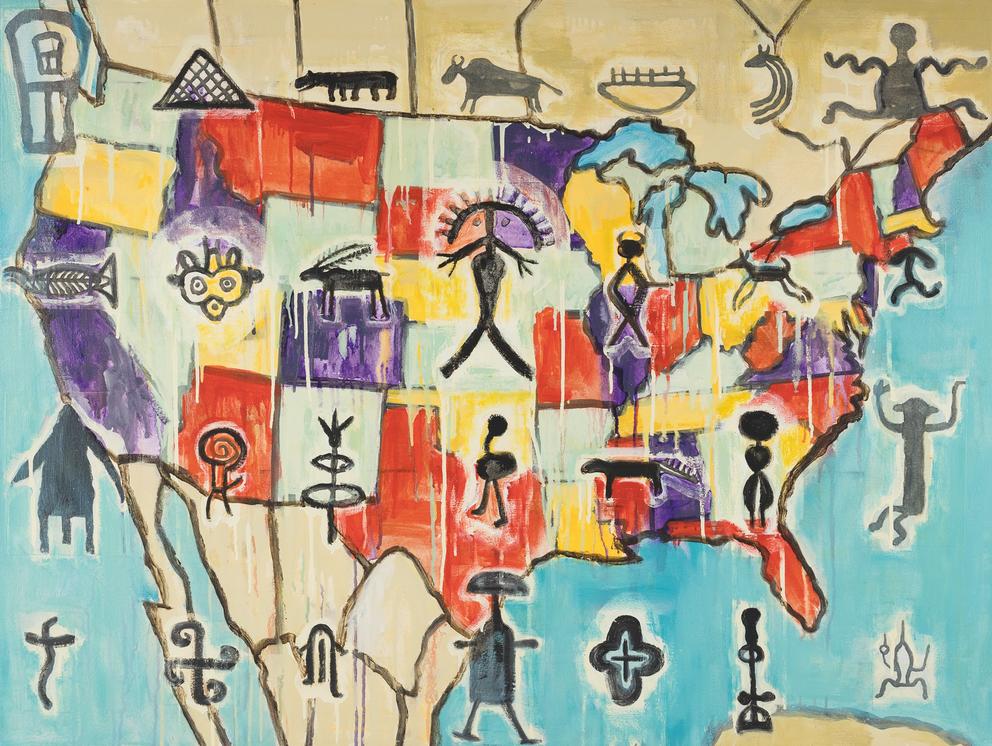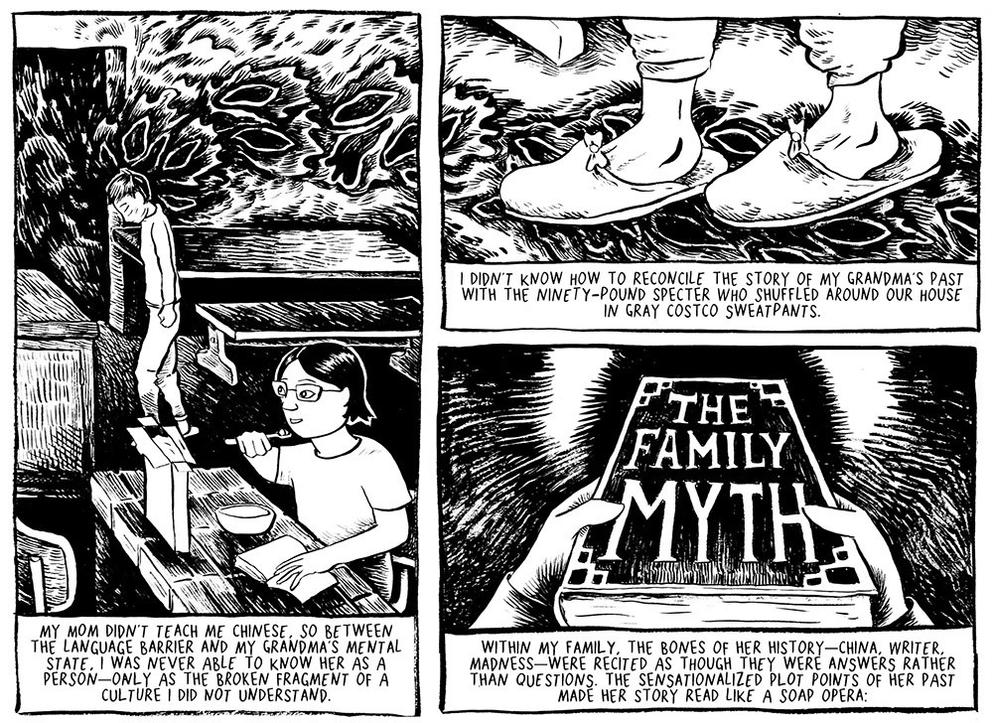The show, A Legacy Rediscovered: Northwest Women Artists 1920 - 1970 (through Jan. 5, 2025), features paintings by a remarkable group of artists whom most of us have never heard of, but who were big deals back in their day.
Here was Zama Vanessa Helder (1904 - 1968), who grew up around Seattle and Spokane and was acclaimed for her “Precisionist” watercolor scenes of Eastern Washington. (She was also known, I learned afterward, for strolling downtown Seattle with her pet skunk.) One of her works was included in a 1943 show of renowned artists at the Museum of Modern Art.
And here was Margaret Tomkins (1916 - 2002), a prominent Northwest surrealist painter, whose work earned her a solo show at Seattle Art Museum in 1941, and who was also exhibited in many national shows. Blanche Morgan Losey (1912 - 1981) painted in styles from realist to surreal, and also created sets for the local Negro Repertory Theater Company and Seattle Opera.
Dorothy Dolph Jensen (1895 - 1977), who cofounded Women Painters of Washington in 1930, became an expert in intaglio and printmaking, the latter of which she taught to Northwest artists James Washington, Jr. and Julius Twohy. And there are so many others! Influential painters who were also teachers, Boeing illustrators, pioneers in computer art-making, skunk owners — their whole lives encapsulated on wall plaques that made me hungry to read more.
March is Women’s History Month. And while designating one month for any demographic can feel performative, when it functions as a prompt to bring important figures like these from the hazy past into the vivid present, I’m all for it.
Another vital figure in women’s art history is alive and well, and today launched her largest exhibit yet: Jaune Quick-to-See Smith: Memory Map at Seattle Art Museum (Feb. 29 - May 12). Organized by the Whitney Museum of American Art, the show features some 130 works — paintings, sculptures, drawings, prints — by the celebrated 84-year-old artist, a citizen of the Confederated Salish and Kootenai Nation.
At the press preview, decked out in all-black clothing and Doc Marten boots, Smith shared her many Seattle connections. She grew up in the Puget Sound region, attended Kent Junior High and Kent Meridian High School and earned an AA at Olympic College in Bremerton. In the 1980s, she created a Chief Seattle (or C.S.) series of paintings, incorporating images and quotes from the Duwamish and Suquamish leader.
“Being here at Seattle Art Museum is a surrealistic dream for me,” she said. “I keep pinching myself.”
Covering some 50 years, the show runs thick with Smith’s iconography. Canoes appear again and again, sometimes suspended in midair and filled with Starbucks cups, plastic water bottles and other trash, all painted an eerie ochre. Mixing petroglyphs and pop-culture ephemera, including newspaper and magazine headlines, Smith — a longtime activist for human rights and environmental issues — cleverly questions the status quo.
When she was finally able to study it, Smith took to art history like a crow to shiny objects. Across the colorful urgency of her work, you can find elements of abstract and Pop Art, cartoons and collage, Pablo Picasso and Jasper Johns, Mickey Mouse and McDonald’s — all of it blended with Indigenous animism and her own biting humor.
There is so much woven into each work, including one of her earliest pieces: “Indian Madonna Enthroned” (1974), a life-size soft sculpture of a Native woman draped in an American flag, her hands made of feathers, her heart a dried corn cob.
And outside, across the bridge, one more way to experience Smith’s artmaking: The West Seattle Cultural Trail, an annotated walk from Alki Point to Duwamish Head, which she created in 1997 with artists Joe Feddersen and Donald Fels. The path is still peppered with bronze plaques and viewfinders offering a sense of the layered histories in which Smith is so fluent.
For a more personal take on women’s history, consider the new graphic memoir from Seattle artist and writer Tessa Hulls. Feeding Ghosts — meticulously researched and emotionally fierce — traces three generations of women across identities and oceans. (Hulls reads from the book March 6 at 7:30 p.m. at Town Hall Seattle.)
In 1949, under persecution from the Communist government, Shanghai journalist and single mother Sun Yi was forced to flee to Hong Kong. She brought her daughter Rose — both hid in the false bottom of a fishing boat. Once arrived, Sun Yi penned a bestselling memoir, Eight Years in Red Shanghai: Love, Starvation, Persecution, and used the money to send Rose off to boarding school. Sun Yi then had a mental breakdown and was never the same.
As a child, Hulls knew Sun Yi as the “broken ghost” of a grandmother who lived with her and her mother Rose. With the double barriers of language and mental illness, Hulls had only the thinnest outline and understanding of her grandmother’s past. But with this impressive undertaking, those lines are fleshed out with artful ink.
Steeped in Chinese history and pulsing with drawings that swim between Surrealism and comic-book style, the memoir is a remarkable document of the legacy of immigration — and how mothers and daughters share and shift the ungainly weight of generational pain, common traits and love.
Get the latest in local arts and culture
This weekly newsletter brings arts news and cultural events straight to your inbox.





